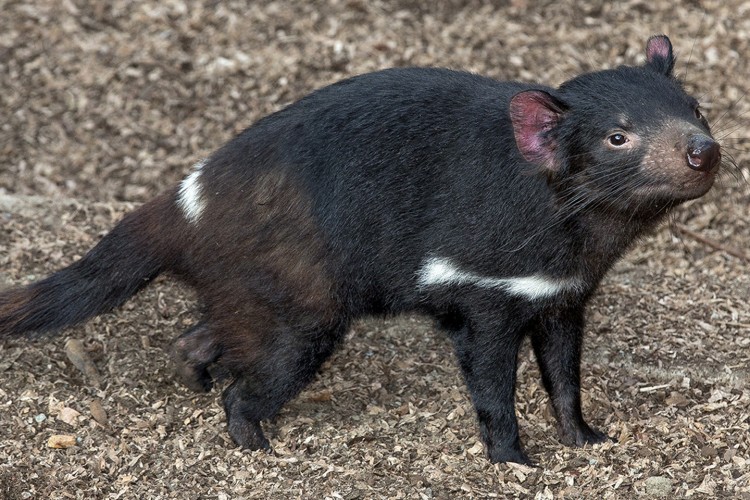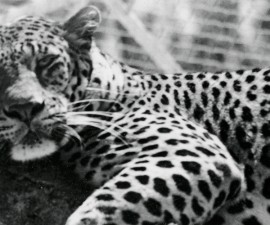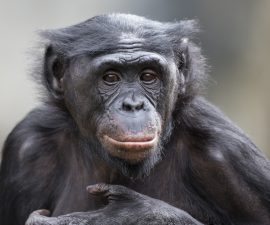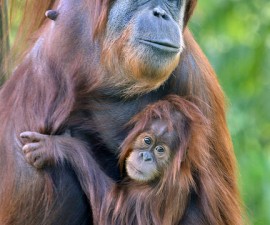BY kabrams
Photography by Ken Bohn
It is the largest carnivorous marsupial in the world. It is solitary and nocturnal, roaming nearly 10 miles by night looking to scavenge or hunt whatever is available. Powerful jaws and teeth enable it to consume its prey—bones, fur, and all. Though barely bigger than a beagle, it has a fierce and effective vocal repertoire, from harsh coughs and snarls to high-pitched shrieks, especially when bellied up to a large carcass or vying for a mate. When early European settlers encountered the famously ferocious mammal, they dubbed it a “devil” and tacked on its geographic range to avoid confusion: the Tasmanian devil Sarcophilus harrisii.
But something the creature cannot stave off with its wily ways or ear-splitting shrieks is devil facial tumor disease (DFTD), a highly contagious, consistently fatal cancer that starts in the mouth and moves to the animal’s face. It is found only in this species. The disease has already decimated 85 percent of wild devils since 1996. The unusual affliction has created a crisis for this species that requires commitment and collaboration to combat, and San Diego Zoo Global is contributing expertise and support to this pressing conservation cause. “It is an urgent situation,” said Bob Wiese, Ph.D., chief life science officer of San Diego Zoo Global. “We need to find ways to re-establish Tasmanian devils throughout their historic range and keep the animals free of this aggressive and fatal disease.”
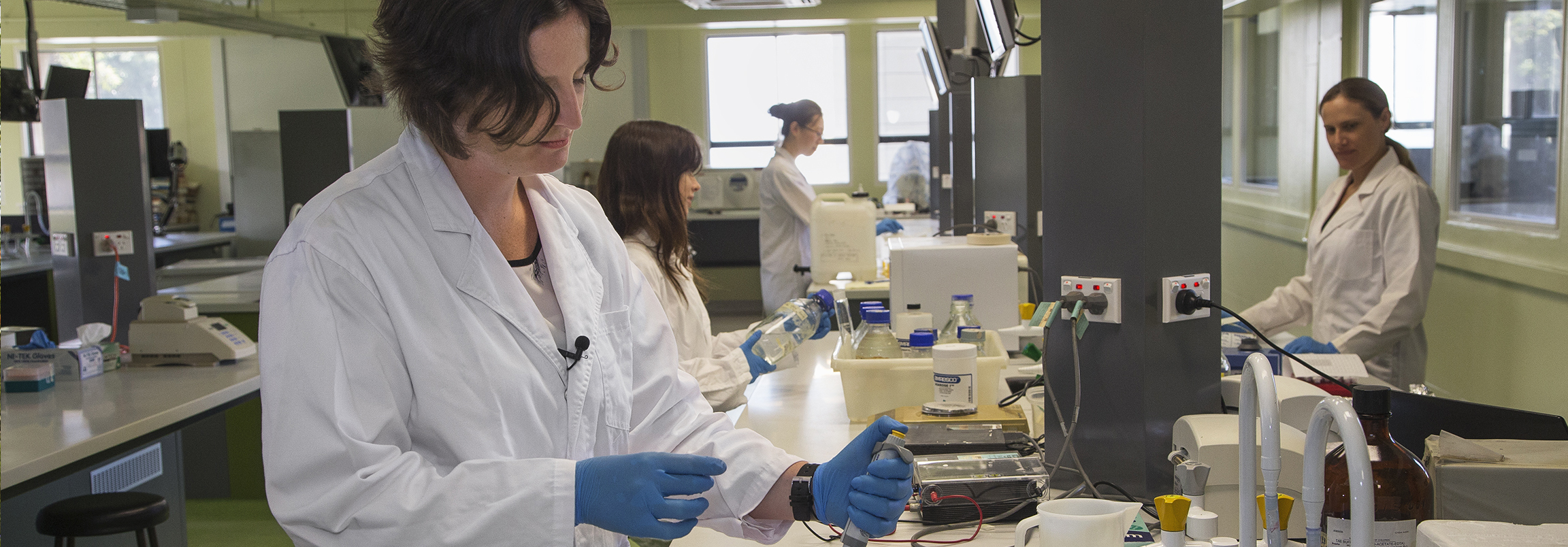
Safe Haven
Researchers are working diligently on several fronts to save the Tasmanian devil. Breeding centers, including the Trowunna Wildlife Park in Tasmania, are working together to form disease-free populations that can be reintroduced to the wild. These assurance populations are critical to the Save the Tasmanian Devil Program (STDP). To facilitate breeding and natural behavior, devil enclosures are spacious and complex with climbing structures, hiding places, and nest material.
The University of Sydney is a leader in genetic sequencing of the Tasmanian devil. This expertise will be used to monitor genetic variation in the devils being bred in zoos and breeding facilities. San Diego Zoo Global is contributing $500,000 to this project, including funding geneticist Catherine Grueber, Ph.D., at the university. Her conservation work will help maximize genetic diversity within assurance populations.
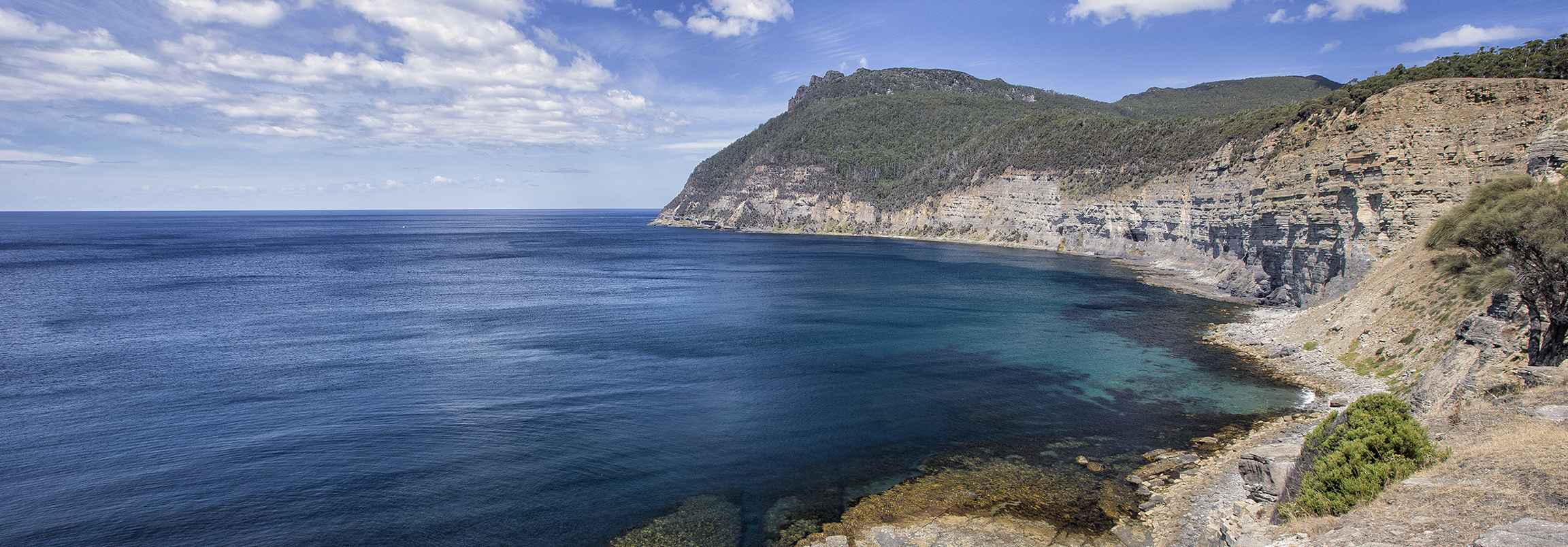
SHOUT OUT
We are pleased to collaborate with the Tasmanian government’s Save the Tasmanian Devil Program, The University of Sydney, and the Zoo and Aquarium Association of Australasia to help save the Tasmanian devil from extinction.
Protected Landscape
A vast river separates the Tasman Peninsula from the mainland, making it a manageable location to reintroduce devils and monitor them. A fence has been built across the narrow isthmus to keep out devils that may have DFTD and could spread the disease. Catch-and-release traps made out of PVC pipe are baited and set around the area. When a Tasmanian devil is caught, biologists take a series of measurements; check its body condition; closely inspect its mouth, since tumor cells are transmitted through biting and emerge there first; microchip the animal; and collect tissue samples. This project is “worthwhile because it is the only way we can actually stop the disease from getting into the population,” explained Bill Brown, wildlife biologist for STDP. The re-wilding of this peninsula will be a critical and ongoing process in saving the Tasmanian devil.
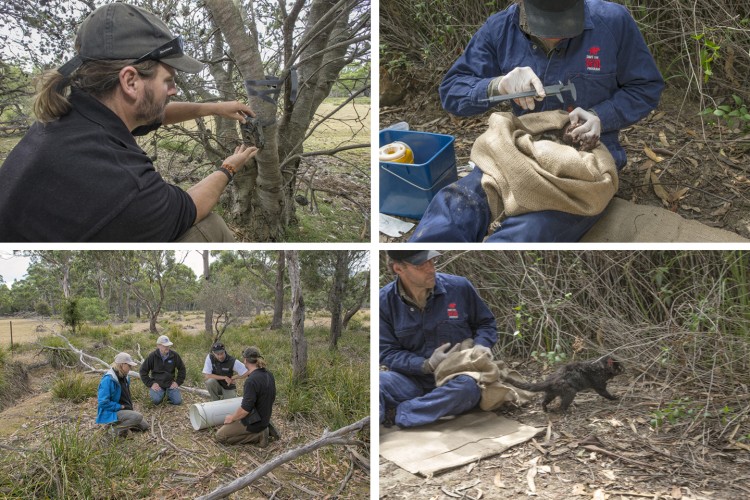
Maria Island, a picturesque ecosystem isolated from the mainland, is an ideal habitat in which to translocate healthy Tasmanian devils. To date, more than 80 adult animals inhabit the island, from a release cohort of 27. Researchers continue to monitor the animals through 14 video-camera traps set throughout the island, as well as observing telltale signs of them, such as their unmistakable scat. In addition to the devils’ activities, the camera traps reveal other native creatures like echidnas and wombats. It is a long-term investment in Tasmanian devils. “We knew it wasn’t going to be a dump-and-run exercise,” said Drew Lee, translocation team leader with STDP. This is a collaborative effort to resuscitate populations of this iconic species, including laboratories, breeding centers, select zoos around the world, and San Diego Zoo Global.
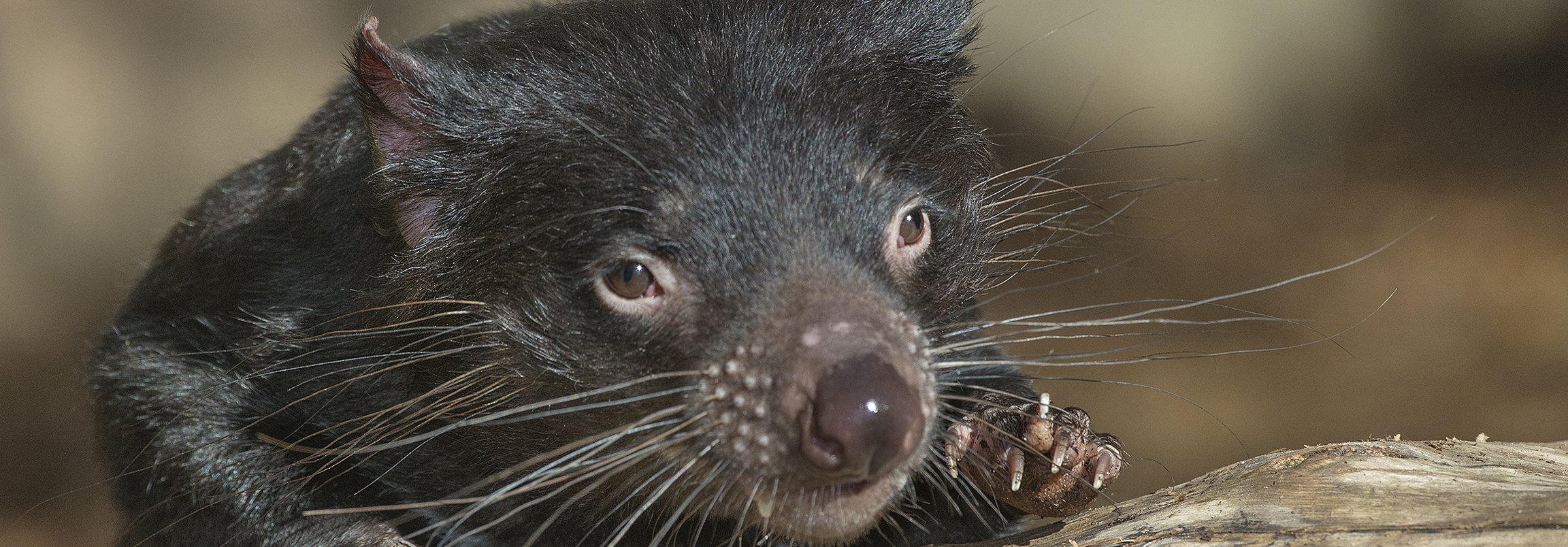
Our Devils
Katie Tomlinson, senior keeper at the Zoo, attended a workshop on Tasmanian devil husbandry at Trowunna Wildlife Park in the hopes that we would one day be chosen to exhibit the devils. Happily, in 2013, San Diego Zoo received four Tasmanian devils for our Conrad Prebys Australian Outback exhibit: three males named Conrad, Nick, and Jake, along with Debbie, a female. Katie has worked with them from day one and considers them her “little pride and joys.” The animals have settled in nicely and each has its own personality: Jake is no longer tearing up the plants in his exhibit (in his defense, digging is natural for these animals), Conrad enjoys peering at his food-bearing keepers through the exhibit door, Debbie shows her keen intelligence when she’s not feeling ornery, and Nick has totally embraced the laid-back Southern California lifestyle.
The animals are rotated between the four exhibits, with new scents and different hiding and basking spots providing enrichment. They are “scatter fed” throughout the day, which keeps them active and engaged. As dyed-in-the-wool carnivores, they get mice, beef parts, fish, and big juicy bones—there are never leftovers! The devils’ biggest job is to teach visitors about the health plight of their wild counterparts, while dispelling the dervish reputation of the species. “We have a great opportunity to introduce them to people here in the US, and show that they are not just a cartoon character,” said Katie. Inspiring people to care about these unusual marsupials and working with other organizations to save them from extinction is our mission. And it’s not impossible.


